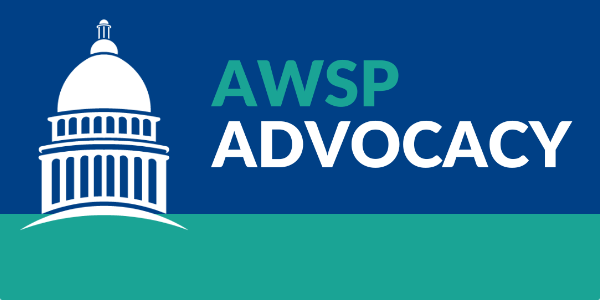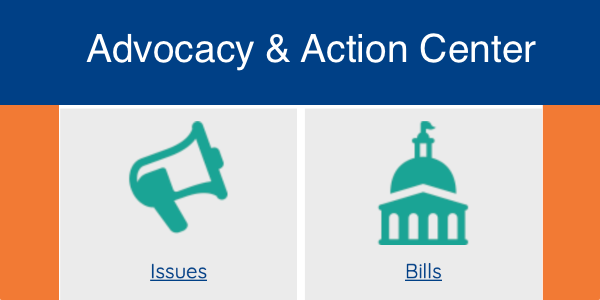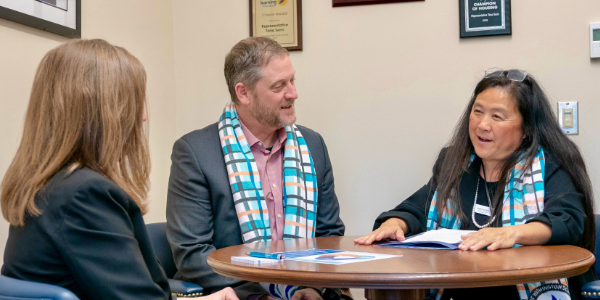Feb 20, 2024, 08:00 AM
by
Caroline Brumfield
Since covering pension/retirement/health insurance issues on behalf of WASA and AWSP, there are a few important points we have learned. This is just a brief summary of selected retirement related topics. However, the importance of advance planning cannot be overstated. These are not issues to put off until the last month of either one’s impending retirement or approaching Medicare eligible age. It’s best to complete your retirement application 30–90 days before you plan to retire.

A Retirement Primer From The Nexus Group
Since covering pension/retirement/health insurance issues on behalf of WASA and AWSP, there are a few important points we have learned. This is just a brief summary of selected retirement related topics. However, the importance of advance planning can not be overstated. These are not issues to put off until the last months of either one’s impending retirement or approaching Medicare eligible age. Start by requesting an official benefit estimate from DRS 3 to 12 months prior to your retirement date.
- The most important resource for planning one’s retirement pension and finding answers to questions is www.drs.wa.gov (the website for the Dept. of Retirement Systems).
- On that page, there is a link (Log In) to set up on-line account access. Do so.
- An important link is checklist for retirement planning: https://www.drs.wa.gov/life/retire/check/
- Request an official benefit estimate from DRS 3 to 12 months prior to your retirement date. Make this request through your online account or check this link https://www.drs.wa.gov/benefit-estimator-tool-newsfeed/
- Check to see about either continued enrollment in SEBB or PEBB . Insurance coverage is often a bigger deal to people who are retiring than the COLA (especially since any missed COLA is banked): https://www.drs.wa.gov/tie-your-retirement-newsfeed
- There is also a “Contact Us” https://www.drs.wa.gov/contact/ One can fill out a form with specific questions or make a phone call to talk to someone about your specific situation. DRS is very responsive in both cases.
What if I want to return to work?
DRS offers an explanation of the current rules regarding return to work depending on the plan you are under. Contact DRS directly with your situation to insure that your pension payment will not be at risk should you return to work. The link to their information on returning to work is: https://www.drs.wa.gov/life/retired/rrtw/
When do I retire?
There can be two different dates; the separation date and the retirement date. They may be different.Separation Date – the last day you’re paid for employment. Typically, your last day in public service. Retirement Date – the first day of the month AFTER your separation date and you’ve applied to retire.
DRS had previously been encouraging teachers to retire in July but with the advent of SEBB and those benefits stopping in June if they retire we are now seeing most teachers choose a retirement in September so they maintain the SEBB coverage through August and then transition to PEBB in September. This is especially true for teachers who are returning prior to 65 where PEBB is much more expensive. The other reason this can be important is if they forgot to sign up for PEBB for July and August
One issue that affects school administrators is the loss of two months of service credit.Let me explain:
When I began as an administrator, I lost two months of service credit. What’s that about?
If you are a teacher, service credit (years of experience) is calculated from a year that runs from September 1 through September 1. If you are an administrator, service credit runs from July 1 through July 1. So, if you were a teacher and moved into school administration, you ‘lose’ two months of service credit. For example, if you retired from being an administrator after 30 years of service, the Department of Retirement Systems (DRS) would show that you had 29 years, 10 months of service credit. In effect, you have ‘lost’ the two months credit for teaching.
How can I make up those lost two months?
There is little likelihood of a legislative fix, but there are some options. One of the first steps in planning for retirement is to estimate your benefit. This link takes you to that page: http://www.drs.wa.gov/benefit-estimators/html/
You can input your estimated date of retirement. You should input both July 1 of the year you expect to retire and have the estimator calculate your benefit, and you should input September 1 of the year you expect to retire and see the result. Technically, you have never ‘lost’ the two months as a teacher. They have just become phantoms in the system due to the calendar years for the different positions. You are still entitled to that credit.
So you have a decision to make. If you forgo collecting your first retirement check until September 1, you will have full service credit. If you choose July 1 as your retirement date, you will lose two months of pension checks. If the difference in the benefit is enough to justify the wait, then you may decide to do so. If not, then choose July 1.
Another related question is:
Plan 2/3 teachers and school employees ask: What's the best retirement month for me?
When it comes to retirement planning, teachers and school employees in Plans 2 and 3 often ask whether it’s better to retire at the end of June (when they stop working) or in September (when their contract ends). Another issue to consider is the cost of living adjustment for Plans 2 and 3 balanced against the SEBB/PEBB insurance issue (See discussion above). Some choose a July 1 retirement date if the last day worked is in June. Why? It all has to do with what’s gained from an earlier start to benefits and COLAs (cost-of-living adjustments) compared with what’s earned from two extra months of service.
These two scenarios illustrate the differences:
- July retirement scenario – Let’s say you decide to retire starting in July 2024. In this circumstance, you’ll receive your pension benefits plus your salary for July and August. In addition, your cost-of-living adjustment (COLA) will start in July of the following year (July 1, 2025). What you won’t receive is service credit for July and August.
- September retirement scenario – If you retire starting in September 2024, your COLA won’t go into effect until July 2026. That’s one year and 10 months after your retirement. This is because you must be retired for an entire year before receiving your first COLA payment. And since COLAs only go into effect on July 1, you must wait. You’ll earn service credit for July and August, but you’ll delay receiving your COLA (and forego pension payments for July and August).
So what’s best? The fact is, if you wait until September, the increase in your benefit from the service credit is minimal compared to the increase you'd receive by retiring in July with an earlier COLA.
If you have any questions about your retirement date or COLAs, please contact DRS.
- Regarding health insurance: Upon retirement a person can choose to purchase insurance with the Public Employee Benefit Insurance Board, a state-wide insurance ‘cooperative’. Their main site is https://www.hca.wa.gov/about-hca/programs-and-initiatives/public-employees-benefits-board-pebb-programand the retiree link is https://www.hca.wa.gov/employee-retiree-benefits/retirees
- Currently there are two possible accounts depending on your situation: PEBB My Account and SEBB My Account, The department is transitioning both into a new program called Benefits 24/7. If you decide to enroll in a PEBB offering, you have to option to sign on to set up an on-line account. https://fortress.wa.gov/hca/ecoveragepebb/login.aspx (Recommended)
- Upon retirement, an individual has 60 days of the school district coverage ending to enroll in a selected plan. If one does not do so, he/she will then forfeit any future option to enroll in any PEBB plan.
- However, if one has a spouse, for example, whose insurance will continue coverage for you as a retiree, one can defer the PEBB option until such time that one would want/need coverage through the PEBB board. However, those deferring need to request proof of employer coverage to keep on file the longer they are deferred. This must be provided to PEBB upon their request to insure continuous coverage. See #11 below. Again, if one does not file a deferral request, he/she will forfeit future enrollment in any of the PEBB plans.
- Regarding the deferral process; two important caveats: (1) If you are covered through the AppleCare insurance option (which is generally free and income-based), the deferral option is not available, and more importantly, (2) If you want to move from the state exchange coverage or other non-PEBB insurance coverage, you must maintain continuous coverage until the PEBB selection comes into effect. If there is any gap in coverage, the PEBB option is forfeit.
- Medicare enrollment timelines are tricky and timing is critical to insure adequate coverage and access to Medicare Part B. Research and advance planning are needed here.
DISCLAIMER: This information not intended to be for official, legal advice on retirement issues. As always, contact DRS or PEBB for a definitive answer/confirmation of your status and situation.
*Important* It is always better to call ahead regarding pension information and health insurance questions rather than making a wrong choice and then either trying to undo it or having to live with what may turn out to be a poorer choice.
Fred Yancy & Mike Moran
The Nexus Group








